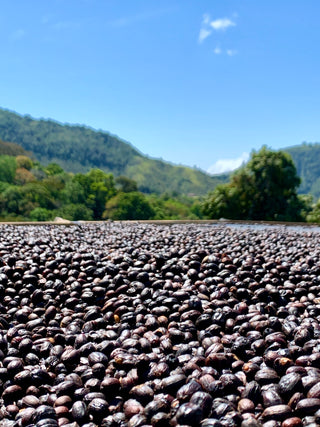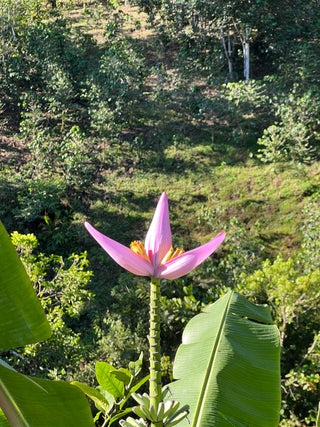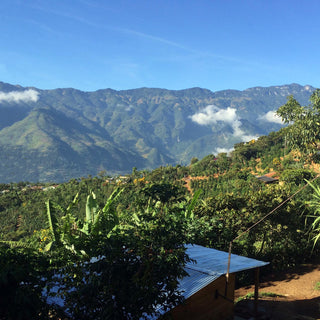- Espresso
Candy Cloud Espresso
SANGRIA | TAMARIND | PAPAYA
If you used to drink our R3 espressos, then this is the right coffee for you.
Candy Cloud is an espresso that will push your boundaries. The coffees we put in it are fun, a bit out there, but above all sweet and super interesting. The coffee in Candy Cloud right now is a natural processed caturra from Finca Hartmann in Panama. You can read more about the Hartmann farm below.
Adding product to your cart


NATURALS DONE THE RIGHT WAY
The Hartman family is made up of four brothers and a sister, their spouses and their grand or their children. Their grandfather Alois Strasil Hartmann first mountaineered through the Santa Clara region in the late 1800s. He found a remote, beautiful, fertile, forest enclosed region that would later become Finca Hartmann. Alois’ son, Ratibor “Chicho” Hartmann was responsible for growing the plantation and establishing Finca Hartmann as a coffee farm. Chicho’s children now run the farm.
Chicho passed in 2016, but years before his passing, he sat his Children down and gave them two options on how to move forward. Option one was the traditional way of dividing the land up by five and each sibling doing their own independent thing. Option two was to keep the land intact and have them work as a team, each focusing on their own strength. They chose…drumroll… option two.
OK, so let’s talk about the coffee. It’s grown at 1300m, which should just be an average coffee that you drink and forget about. It should be nothing special, yet it’s amazing coffee. So, what’s their secret?
It’s all about love, care and attention to detail. First, they've planted varieties that they've experimented with at that elevation and they are varieties that thrive both in the cup and in the field - mostly it’s caturra and typica.
Second, they've taken these plants and they've given them lots of care and nurture. When I walk through the farm, the trees are some of the happiest and healthiest I've seen. Then when it's time to pick, they're super punctual. Everyday during the harvest, they find the plot of land that has the most ripe cherry and pick that day.
And then in the processing, they do a spot on job of sorting out under ripe cherry and over ripe cherry and really selecting and processing the cherry that’s perfectly right. What sets this natural apart is that they pre-dry on raised beds, then use the magical dark room dehydrators, and if the harvest is a big one, they finish the natural process in mechanical dryers.
The result is a natural done the right way. The cup profile is predominantly fruity and juicy, with a super sweet finish. Most importantly, it’s clean - many naturals can easily achieve a fruity profile, but at the expense of other, unpleasant, flavours.
– Sebastian

PAIRS WELL WITH
Did you say Hartmann...no hit and miss science lab mistakes ...always just fantastic coffee ... ¡ compra !
Amazing coffee. Great flavor. Just buy it.
I liked it
Another brilliant roast. Thanks Phil & Seb!
Smooth and flavorful.


